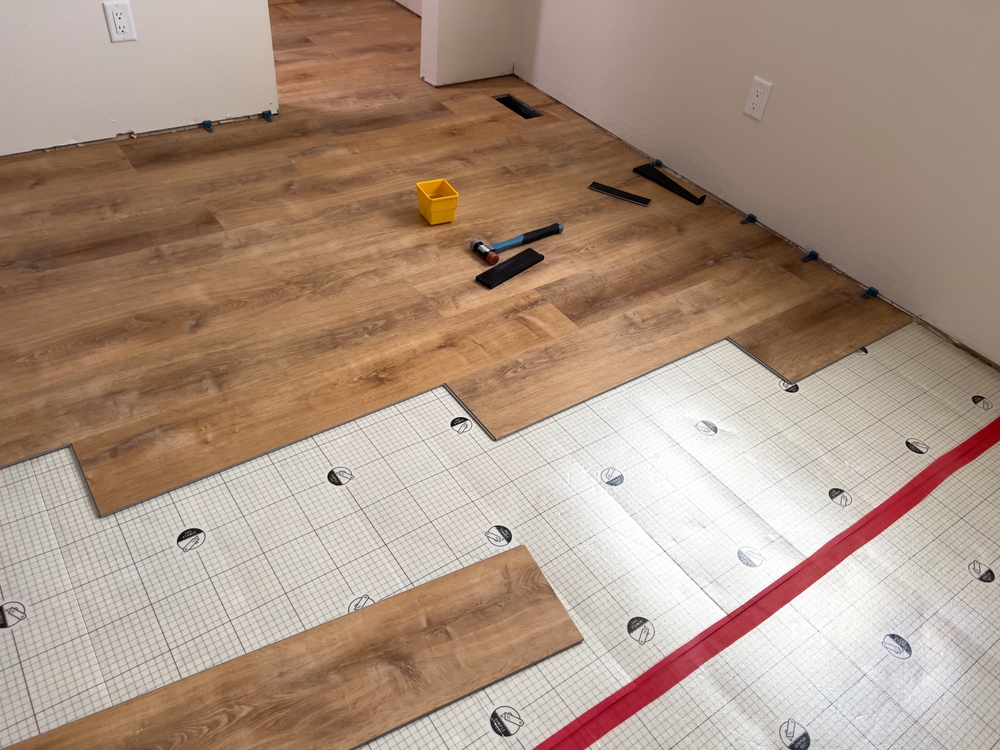How To Prep For Hardwood Flooring Installation

Installing hardwood floors can elevate the beauty and value of your home. However, achieving a seamless hardwood flooring installation requires careful preparation. From clearing spaces to choosing the right materials, every step ensures the installation process is smooth and stress-free. In this guide, we’ll walk you through how to prepare for hardwood flooring installation, covering everything from pre-installation tips to what to expect on installation day.
Why Preparation Matters for Hardwood Flooring Installation
Proper preparation is essential for a successful hardwood flooring installation. By taking the necessary steps beforehand, you can:
- Avoid unexpected delays.
- Protect your furniture and belongings.
- Ensure the new flooring adheres correctly.
- Prevent long-term damage to the floors.
Whether you’re hiring professionals or tackling the installation yourself, preparation is key to achieving a flawless finish.
Assessing Your Space: The First Step in Preparation
Measure the Room Accurately
Before starting your hardwood flooring installation, measure the room’s dimensions. Knowing the square footage ensures you purchase the correct amount of material, accounting for at least 10% extra for cuts and mistakes.
Inspect Your Subfloor
A sturdy, level subfloor is critical for hardwood installation. Inspect for unevenness, moisture, or damage. Common subfloor materials like plywood and concrete have different preparation requirements. Addressing subfloor issues beforehand prevents warping or buckling after installation.
Clear Out Furniture and Decor
Emptying the space is non-negotiable for preparing for hardwood flooring installation. Move furniture, decor, and other items to another room. If moving heavy items isn’t feasible, consider renting furniture sliders or hiring professionals.
Preparing for Hardwood Flooring Installation: Key Tasks
Acclimate the Hardwood Planks
Wood is a natural material that expands and contracts with temperature and humidity changes. To prevent gaps or warping after installation, acclimate the hardwood planks to your home’s environment. Leave them in the installation space for at least 48–72 hours before starting.
Address Humidity and Temperature
Maintaining stable indoor humidity levels between 35–55% is crucial for hardwood flooring installation. Invest in a hygrometer to monitor humidity and use dehumidifiers or humidifiers as needed.
Clean the Subfloor Thoroughly
Debris, dust, and grease can hinder proper adhesion. Sweep, vacuum, and mop the subfloor to ensure a clean, smooth surface. Let it dry completely before installation begins.
Protect Adjacent Areas
Hardwood flooring installation can generate dust and noise. Protect other rooms by sealing doorways with plastic sheeting. Cover nearby furniture or items that can’t be moved with drop cloths.
Choosing Materials and Tools for Hardwood Flooring Installation
Selecting the Right Hardwood
Choosing the right type of wood is one of the most critical aspects of preparing for hardwood flooring installation. Factors to consider include:
- Wood Species: Oak, maple, and cherry are popular for their durability and aesthetics.
- Finish: Prefinished planks save time, while unfinished ones allow customization.
- Plank Size: Wider planks create a modern look, while narrow ones are more traditional.
Stock Up on Necessary Tools
Having the right tools ensures a smoother installation process. Basic tools include:
- Tape measure and chalk line.
- Nail gun or adhesive (depending on the installation method).
- Circular saw or miter saw.
- Mallet and tapping block.
Preparing for Professional Hardwood Flooring Installation
Discuss Details with Your Installer
If hiring professionals, communicate clearly with your installer. Confirm the schedule, installation method, and any specific requirements for your flooring type.
Plan for Occupant Disruption
Installation can be noisy and intrusive. Plan to stay out of the space during the process. If the installation covers large areas of your home, consider temporary accommodations.
Ensure Access to the Installation Area
Provide easy access for installers to bring in materials and tools. Clear driveways, hallways, and pathways. If possible, secure a staging area for them to work efficiently.
DIY Hardwood Flooring Installation: Additional Prep Tips
Read Manufacturer Instructions
Every hardwood flooring product has unique installation requirements. Read the manufacturer’s guidelines thoroughly before starting. This step prevents voiding warranties and ensures you use the right techniques.
Practice Safety Measures
Safety is paramount when installing hardwood floors. Wear gloves, goggles, and dust masks. Ensure tools are in good working order and that you’re familiar with their operation.
Dry-Fit the Planks
Before permanently attaching the planks, dry-fit them to see how they align. This helps you identify potential issues, such as uneven cuts or mismatched grains, before committing.
What to Expect on Installation Day
Professional Installation
During professional hardwood flooring installation, installers will:
- Prep the subfloor again to ensure it’s ready.
- Lay the hardwood using the agreed-upon method (nail-down, glue-down, or floating).
- Trim planks to fit around obstacles like vents and corners.
- Finish and clean up the area.
DIY Installation
If you’re handling the installation yourself:
- Lay a vapor barrier (if required) to protect against moisture.
- Start laying planks from the longest wall or a focal point.
- Use spacers to maintain expansion gaps.
- Cut and fit planks as needed, securing them in place.
Post-Installation Care
Allow Floors to Settle
After installation, allow the floors to settle for 1–3 days before moving furniture back into the space. This ensures the adhesive or fasteners properly bond to the subfloor.
Clean Up Dust and Debris
Sweep and vacuum to remove any dust created during the process. For a deeper clean, use products recommended by your flooring manufacturer.
Implement Maintenance Practices
To keep your new hardwood floors in pristine condition:
- Avoid walking on them with high heels or cleats.
- Use furniture pads to prevent scratches.
- Regularly clean with a damp (not wet) mop.
Common Mistakes to Avoid When Preparing for Hardwood Flooring Installation
Skipping Subfloor Preparation
Neglecting to prepare the subfloor can lead to uneven flooring or long-term damage. Always inspect and address subfloor issues before installation.
Not Acclimating the Wood
Failing to acclimate hardwood planks can result in unsightly gaps or warping. Always acclimate the wood to your home’s environment.
Underestimating Time and Effort
Hardwood flooring installation is labor-intensive. Allocate enough time for preparation, installation, and cleanup to avoid rushing.
Final Thoughts on Preparing for Hardwood Flooring Installation
Preparation is the foundation of a successful hardwood flooring installation. By measuring accurately, clearing your space, and acclimating materials, you set the stage for a smooth process and lasting results. Whether you opt for professional installation or a DIY approach, following these steps ensures your new hardwood floors enhance your home for years to come.

